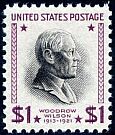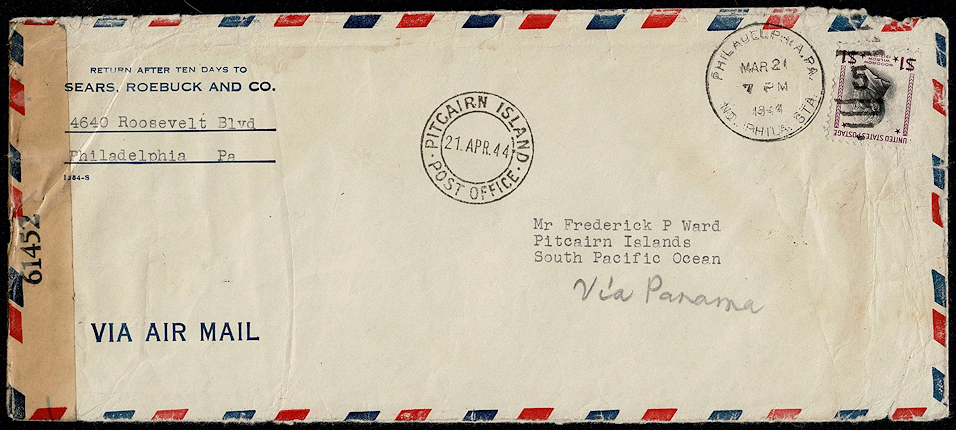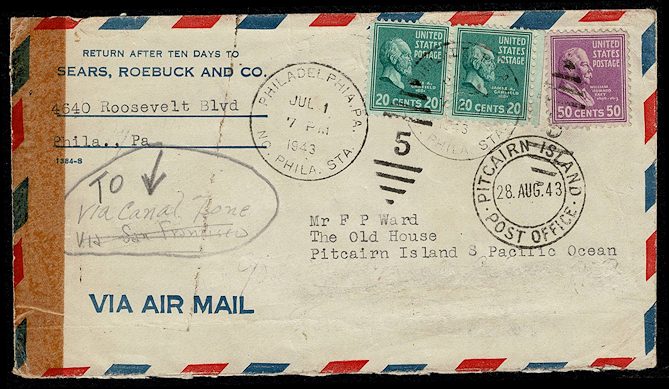
The One-dollar Prexie
Four times Airmail to Pitcairn Island?
The airmail rate to Pitcairn Island via New Zealand was twenty-five cents per half ounce from 1949, as documented by the Postal Bulletin of March 22, 1949 that Steve Suffet uncovered, most likely until 1961 The service would go by air to New Zealand, then by steamship to Pitcairn Island.

This cover, mailed from Philadelphia March 21, 1944 must have had contents weighing between one-and-a-half to two ounces to require four times the air-sea rate to the Pitcairn Islands. BUT, how could a cover mailed in 1944 be sent at a rate not announced until 1949? In 1944 the route was to Panama by air and ship to Pitcairn Island, at a cost of fifteen cents per half ounce, and this cover has "Via Panama" on the front and a Cristobal receiving mark on the back. It did not go by way of air to New Zealand.
Since one dollar is not evenly divisible by 15, is it possible that there was an additional charge of ten cents per half ounce for the ship passage? Possibly, but there is no mention of this in the 1949 announcement, nor the description of the earlier route. Nor does the cover shown below have any sign of such a surcharge.
Looking at the dollar stamp, I do not believe that it originated on this cover. None of the killer bars extend beyond the edges of the stamp other than the two that complete the design at the top. There also appear to be some extraneous ink marks at the left edge of it. The killer bars are not quite the same distance or angle from the circular cancel as they are on the cover shown below, either.
Why is the stamp placed upside down? One good reason is to keep the killer cancel lines on the left side of the stamp where they have to be and the "5" right side up. The dollar stamp probably replaced a fifteen-cent stamp originally on the cover. Or, possibly, a thirty-cent stamp. I simply don't believe that the dollar stamp was there when the cover left Sears, Roebuck and Company in 1944. Pity.
